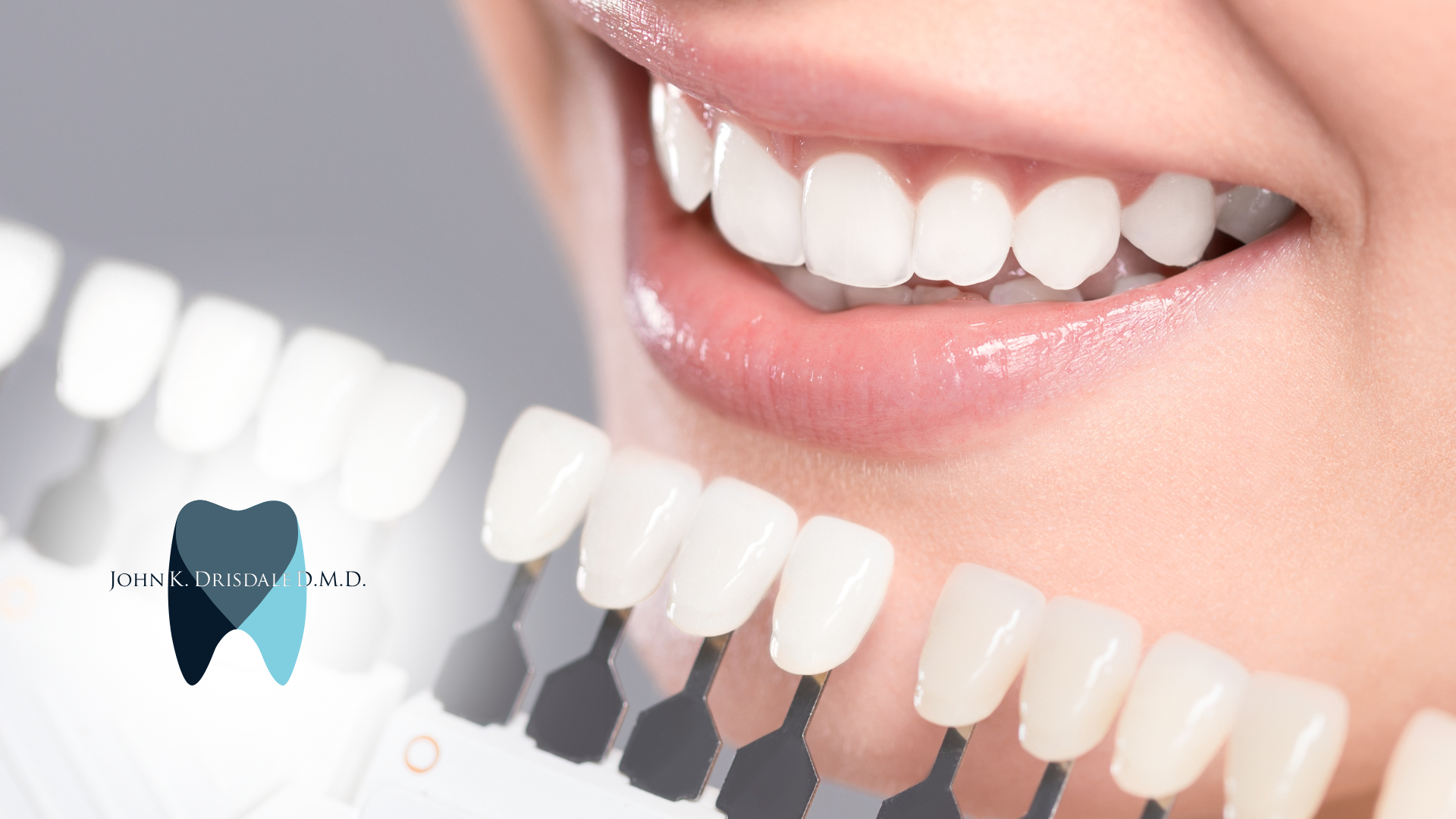How Do Clear Aligners Work? Your Comprehensive Guide to Straighter Smiles
Understanding Clear Aligners
The Basics of Clear Aligner Technology
Clear aligners are a modern orthodontic treatment option designed to straighten teeth through a series of custom-made, virtually invisible plastic trays. Unlike traditional braces, these aligners are removable and made from smooth, comfortable materials that fit snugly over your teeth.
The principle behind clear aligners is the application of controlled force to move teeth into the desired position gradually. Each aligner is slightly different, applying pressure to specific teeth, which is why they must be worn in the correct sequence.
- Aligners are worn for about two weeks before moving on to the next in the series.
- Patients typically visit their orthodontist periodically to monitor progress.
- The total number of aligners varies depending on the complexity of the case.
Clear aligners offer a discreet and less intrusive alternative to metal braces, allowing patients to maintain their lifestyle with minimal interruption.
Types of Clear Aligners Available
The market for clear aligners is diverse, offering several brands and types to suit different orthodontic needs. Invisalign is perhaps the most well-known, renowned for its customizability and effectiveness. However, alternatives like ClearCorrect, SmileDirectClub, and Byte also provide unique benefits and may be more cost-effective.
- Invisalign
- ClearCorrect
- SmileDirectClub
- Byte
Each brand uses its proprietary technology and material to create aligners that are virtually invisible and removable. While Invisalign aligners may be administered by orthodontists, options like SmileDirectClub offer a direct-to-consumer model, which can be more convenient for some patients.
The choice of aligner should be based on individual needs, budget, and the complexity of the dental issues being addressed. It's essential to consult with a dental professional to determine the most suitable option for your case.
Comparing Clear Aligners to Traditional Braces
When considering orthodontic treatment, it's essential to understand the differences between clear aligners and traditional braces. Clear aligners offer a discreet and removable option, whereas traditional braces are fixed and more noticeable.
- Visibility: Clear aligners are virtually invisible, making them a popular choice for adults and teens who are self-conscious about their appearance. Traditional braces, with metal brackets and wires, are more visible.
- Comfort: Aligners are typically considered more comfortable than braces, as they are made of smooth plastic and do not have sharp edges.
- Hygiene: With removable aligners, maintaining oral hygiene is easier since you can brush and floss normally. Braces can make cleaning teeth more challenging.
- Food restrictions: There are no food restrictions with aligners because they can be taken out while eating. Braces require avoiding certain hard or sticky foods.
While clear aligners can be an excellent choice for many, they are not suitable for all orthodontic cases. Some complex dental issues may still require traditional braces for effective treatment.
The decision between clear aligners and traditional braces should be made in consultation with an orthodontist, who can advise on the best treatment option based on the individual's needs and the complexity of their case.
The Treatment Process
Initial Consultation and Assessment
The journey to a straighter smile begins with an initial consultation and assessment. During this first visit, your orthodontist will evaluate your dental structure and discuss your aesthetic goals. This step is crucial in determining whether clear aligners are the right choice for you.
- Examination of teeth alignment and bite issues
- Discussion of dental history and any previous orthodontic work
- Assessment of oral health to ensure suitability for aligners
The initial assessment not only sets the stage for your treatment plan but also gives you the opportunity to ask questions and understand the process ahead.
Following the assessment, if you are a good candidate for clear aligners, the orthodontist will explain the next steps, including taking impressions or digital scans of your teeth. These will be used to create your custom aligners and outline your treatment journey.
Creating a Custom Treatment Plan
Once your orthodontist has gathered all the necessary information during the initial consultation, the next step is to create a custom treatment plan tailored to your unique dental needs. This plan is a roadmap to achieving the desired teeth alignment and includes several critical components:
- Detailed mapping of tooth movement: Your orthodontist will outline the specific movements each tooth needs to make to reach the ideal position.
- Estimated treatment duration: A timeline is provided, giving you an idea of how long the treatment is expected to take.
- Scheduled check-ins: Regular appointments are set to monitor progress and make adjustments as needed.
The success of clear aligner therapy hinges on a well-structured treatment plan that is meticulously followed. It is essential to understand that each step in the plan is designed to move your teeth gradually and safely.
Adherence to the treatment plan is crucial for achieving the best results. Your orthodontist will provide you with detailed instructions on how to wear and care for your aligners, as well as what to do in case of any issues. Remember, the effectiveness of the treatment largely depends on your commitment to wearing the aligners as prescribed.
The Role of 3D Imaging in Aligner Design
3D imaging is a pivotal step in the creation of clear aligners, providing a detailed map of a patient's dental structure. This technology allows orthodontists to craft a series of aligners that are tailored to the individual's unique oral anatomy. The precision of 3D imaging ensures that each aligner is a perfect fit, enhancing comfort and effectiveness.
- The process begins with a digital scan of the patient's teeth.
- Specialized software then creates a virtual model, highlighting areas that require alignment.
- Orthodontists use this model to simulate the movement of teeth over time, designing a sequence of aligners.
With the help of 3D imaging, patients and orthodontists can visualize the expected outcome of the treatment before it even begins. This not only helps in setting realistic expectations but also in making any necessary adjustments to the treatment plan prior to manufacturing the aligners.
Wearing Your Aligners: What to Expect
When you begin your journey with clear aligners, comfort and adaptability are key. Initially, you may experience a slight pressure on your teeth, which is a normal part of the alignment process. Expect to wear your aligners for 20 to 22 hours a day, only removing them to eat, drink anything other than water, and for your oral hygiene routine.
- The first few days may involve a period of adjustment as your mouth gets used to the aligners.
- You'll need to practice speaking with the aligners, as they may slightly affect your speech initially.
- It's crucial to maintain a strict schedule for wearing and changing aligners to stay on track with your treatment plan.
Remember, each set of aligners is typically worn for one to two weeks before moving on to the next in the series. Consistency is vital for the success of your treatment. Skipping days or not wearing the aligners for the recommended time can lead to extended treatment duration and less effective results.
Duration and Phases of Treatment
The journey to a straighter smile with clear aligners is a structured process that typically spans several months to a couple of years, depending on the complexity of the case. The duration of treatment is highly individualized, with the average time frame ranging from 10 to 24 months.
- Initial Phase: This period involves the gradual movement of teeth using a series of aligners, changed every one to two weeks.
- Mid-Treatment Assessment: Adjustments to the treatment plan may be made based on progress.
- Final Phase: The last set of aligners ensure the teeth are in their desired positions.
It's crucial for patients to wear their aligners for the recommended 20 to 22 hours per day to ensure the treatment stays on track. Failure to do so can extend the treatment duration and affect the final outcome.
After the active treatment phase, patients will enter the retention phase, which is vital for maintaining the new position of the teeth. This often involves wearing a retainer as directed by the orthodontist.
Benefits and Considerations
Advantages of Choosing Clear Aligners
Clear aligners offer a modern approach to orthodontic treatment, emphasizing both aesthetics and comfort. They are virtually invisible, which makes them a popular choice for adults and teens who are self-conscious about the appearance of traditional braces.
- Discreet: The clear material blends with your teeth, making them hard to notice.
- Comfort: Aligners are made of smooth plastic and are custom-fitted, reducing irritation to your cheeks and gums.
- Removable: You can take them out to eat, brush, and floss, which promotes better oral hygiene.
- Predictable: Treatment involves a series of aligners, each moving your teeth incrementally, and progress can often be visualized with 3D imaging before you start.
Clear aligners are not just about aesthetics; they represent a shift towards a more convenient and lifestyle-friendly form of orthodontic treatment. While they may not be suitable for all orthodontic cases, they offer a compelling alternative for many patients seeking a less noticeable and less invasive option.
Potential Limitations and Challenges
While clear aligners offer a discreet and modern approach to teeth straightening, they are not without their limitations. Not all orthodontic issues can be corrected with aligners, and some complex cases may still require traditional braces. Here are some challenges that patients might face:
- Aligners must be worn for 20-22 hours a day to be effective, which requires a high level of commitment.
- They need to be removed before eating or drinking anything other than water, which can be inconvenient.
- Patients must be diligent about brushing and cleaning the aligners to prevent staining and bad breath.
It's important for patients to have realistic expectations and understand that the success of clear aligner treatment largely depends on their adherence to the prescribed regimen.
Additionally, clear aligners may cause temporary discomfort or affect speech, especially when a new set is first worn. However, these issues typically resolve as the patient adjusts to the aligners.
Maintaining Oral Hygiene with Aligners
Maintaining oral hygiene is crucial when undergoing treatment with clear aligners. Proper care ensures the effectiveness of the treatment and the health of your teeth and gums. Here are some essential tips to keep in mind:
- Always remove your aligners before eating or drinking anything other than water.
- Brush and floss your teeth before reinserting your aligners to prevent trapping food particles and bacteria.
- Clean your aligners regularly with the recommended cleaning solution to avoid the buildup of plaque and odor.
It's important to follow a consistent oral hygiene routine to prevent dental issues that could compromise your treatment.
If you're unsure about the best practices for maintaining oral hygiene with aligners, consult with a dentist in Midland. They can provide personalized advice and professional cleaning if necessary. Additionally, for those seeking enhancements beyond alignment, cosmetic dentistry in Midland offers a range of services to further improve the aesthetics of your smile.
Lifestyle Adjustments During Treatment
Adopting clear aligners for teeth straightening is a commitment that extends beyond the dental office and into one's daily routine. Patients must be diligent in wearing their aligners for the recommended 20 to 22 hours a day to ensure the effectiveness of the treatment. This requires a conscious effort to maintain this schedule around meals, snacks, and oral hygiene practices.
- Aligners should be removed before eating or drinking anything other than water.
- It is essential to brush and floss after each meal before reinserting the aligners to prevent food particles from getting trapped.
- Patients should avoid habits like smoking or chewing gum with aligners in place, as these can damage or stain the aligners.
While clear aligners offer a less visible solution for teeth straightening, they do necessitate certain lifestyle adjustments. Patients will need to plan their day around aligner wear and care, ensuring they are removed and cleaned regularly. Adapting to these changes can take time, but most find the routine becomes second nature with a little practice.
Cost and Insurance
Understanding the Costs of Aligner Treatment
The cost of clear aligner treatment can vary widely based on several factors, including the complexity of the case, the duration of treatment, and the brand of aligners chosen. It's essential for patients to have a clear understanding of all potential costs before beginning treatment.
- Initial consultation fees
- Price of the aligner system
- Additional costs for follow-up visits
- Potential extra charges for replacement aligners
While insurance may cover a portion of the treatment, out-of-pocket expenses can still be significant. Patients should discuss payment options with their provider to ensure they can manage the financial investment.
Remember, investing in clear aligners is not just a financial decision; it's an investment in your oral health and self-confidence. Comparing prices and services from different providers can help you find the most cost-effective solution for your needs.
Insurance Coverage and Payment Options
Navigating the financial aspect of clear aligner treatment can be complex, but understanding your insurance coverage and payment options is crucial. Most dental insurance plans that cover orthodontic treatment will also cover clear aligners, at least partially. It's important to check with your insurance provider to determine what portion of the treatment is covered and what your out-of-pocket costs will be.
- Verify your insurance benefits and coverage limits.
- Inquire about the insurance claim process for orthodontic treatment.
- Explore payment plans or financing options offered by your orthodontist.
While some patients may have the option to pay for their treatment upfront, many orthodontic offices offer flexible payment plans to make the financial burden more manageable. Additionally, Health Savings Accounts (HSAs) or Flexible Spending Accounts (FSAs) can often be used to pay for aligners with pre-tax dollars, providing a cost-effective solution.
Remember to keep all receipts and documentation related to your treatment, as they may be required for insurance claims or tax purposes. By thoroughly understanding your financial options, you can make informed decisions and ensure that your journey to a straighter smile is as stress-free as possible.
Comparing Costs: Aligners vs. Traditional Orthodontics
When considering orthodontic treatment, cost is a significant factor for many patients. Clear aligners often present a competitive alternative to traditional braces, both in terms of price and value. Here's a breakdown of how the costs compare:
- Initial Investment: Clear aligners may have a higher upfront cost compared to traditional braces. However, this can vary widely depending on the complexity of the case and the brand of aligners.
- Maintenance Costs: With braces, there may be additional costs for things like broken brackets or wires. Aligners typically have fewer unexpected costs after the initial purchase.
- Dental Visits: Traditional braces usually require more frequent visits to the orthodontist for adjustments, which can add to the overall cost. Aligner treatment often involves fewer in-office visits.
While the sticker price is important, it's essential to consider the overall value of the treatment. Clear aligners offer the convenience of being nearly invisible and removable, which can translate to savings in time and lifestyle flexibility.
Ultimately, the best way to understand the cost difference is to consult with an orthodontist who can provide a detailed cost comparison based on your specific needs. Remember, investing in your smile is a long-term commitment, and the right choice will depend on a variety of personal factors beyond just the financial aspect.
Aftercare and Long-Term Results
Retainers and Post-Treatment Care
Once your journey with clear aligners is complete, it's crucial to maintain those straighter smiles. Retainers play a pivotal role in ensuring the stability of your new dental alignment. After the active treatment phase, retainers are typically worn full-time for a short period and then transitioned to nighttime wear.
- Full-time wear often lasts for a few months post-treatment.
- Nighttime wear can continue for a longer duration, sometimes indefinitely, to prevent teeth from shifting back.
It's important to follow your orthodontist's specific instructions for retainer use to protect your investment in your smile.
Regular follow-up visits may be scheduled to monitor the retention phase. These appointments are essential to catch any potential shifts in teeth alignment early and to make any necessary adjustments to your retainer. Remember, post-treatment care is as important as the treatment itself for lasting results.
Monitoring Your Progress and Follow-Up Visits
Regular follow-up visits are a crucial part of the clear aligner treatment process. These appointments allow your orthodontist to monitor the progress of your teeth as they move into their desired positions. Adjustments to your treatment plan can be made if necessary, ensuring that you remain on track to achieving your perfect smile.
- During these visits, your orthodontist will check the fit of your aligners.
- They will also assess the health of your teeth and gums.
- Any concerns or discomfort you are experiencing can be addressed promptly.
It's important to attend all scheduled follow-up visits to ensure the best possible outcome from your aligner therapy.
Consistent monitoring not only helps in fine-tuning the treatment but also provides an opportunity for patients to ask questions and get advice on how to care for their aligners. Remember, your active participation and commitment to the treatment schedule play a significant role in the success of your aligner therapy.
Ensuring Lasting Results from Aligner Therapy
To maintain the beautiful smile achieved through clear aligner therapy, it's essential to follow a post-treatment regimen. Retainers play a crucial role in this phase, as they help to keep teeth in their new position. It's generally recommended to wear retainers full-time for a few months after treatment, gradually reducing to night-time wear.
Consistency is key to preventing teeth from shifting back to their original positions. Regular follow-up visits with your orthodontist will ensure that any minor adjustments can be made promptly.
Here are some additional tips to ensure lasting results:
- Practice good oral hygiene by brushing and flossing regularly.
- Avoid habits that can put pressure on your teeth, such as chewing on pens or biting nails.
- Keep up with regular dental check-ups to monitor the health of your teeth and gums.
- Be mindful of any changes in your bite or alignment, and consult your orthodontist if you have concerns.
Frequently Asked Questions
How do clear aligners straighten teeth?
Clear aligners work by applying consistent, gentle pressure to the teeth, gradually moving them into the desired position over time. Each set of aligners is slightly different, designed to shift your teeth incrementally as you progress through the treatment.
Are there different types of clear aligners, and how do I choose the best one?
Yes, there are several brands and types of clear aligners available on the market. The best choice depends on your specific dental needs, budget, and the recommendation of your orthodontist.
How do clear aligners compare to traditional braces?
Clear aligners offer a more aesthetic and less noticeable solution compared to traditional braces. They are also typically more comfortable and can be removed for eating and cleaning, which is not possible with braces.
What should I expect during the treatment process with clear aligners?
You can expect to go through several phases, starting with an initial consultation, creating a custom treatment plan, and wearing a series of aligners. Each set of aligners is worn for about 1-2 weeks before moving on to the next set.
What are the main benefits of choosing clear aligners over other orthodontic treatments?
Clear aligners are nearly invisible, comfortable, and removable, making them a convenient option. They also allow for easier oral hygiene and have fewer dietary restrictions compared to traditional braces.
How much do clear aligners cost, and will my insurance cover them?
The cost of clear aligners varies depending on the complexity of the case and the duration of treatment. Many dental insurance plans offer some coverage for orthodontic treatments, including clear aligners, but it's important to check with your provider for specific details.




